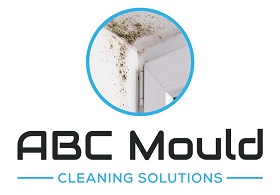Why Springtime in Sydney Is Prime Season for Mould Growth

Spring in Sydney brings warmer weather, blooming flowers, and unfortunately, an increased risk of mould growth. The season’s combination of warmth and moisture creates the perfect environment for mould to thrive. Homeowners and business owners need to be aware of why spring is prime mould season, where it commonly grows, and the health risks it poses. By taking preventive measures, you can protect your property and health.
What Is Mould, and Why Does It Thrive in Spring?
Mould is a type of fungus that grows in multicellular structures known as hyphae. These structures spread across surfaces and penetrate porous materials. Mould reproduces by releasing spores into the air, which can settle on surfaces and grow under the right conditions. While mould is a natural part of the environment outdoors, it can cause significant problems when it grows indoors.
Spring in Sydney creates conditions that are ideal for mould growth. The season is marked by warmer temperatures and increased humidity, both of which are essential for mould to thrive. Mould needs moisture to grow, and the damp conditions following spring rains, combined with warmer air, provide the perfect environment. Surfaces in homes and businesses can remain damp for longer, especially in areas with poor ventilation. The frequent use of air conditioners in spring also contributes to moisture levels, further promoting mould growth.
Where Does Mould Commonly Grow During Spring?
Mould can grow almost anywhere if the conditions are right. However, certain areas in your home or business are more prone to mould during spring due to the combination of warmth and moisture.
Bathrooms and Kitchens
These areas are frequently exposed to moisture from showers, baths, cooking, and dishwashing. In spring, the increased humidity can make it difficult for these areas to dry out completely, leading to a higher risk of mould. Common spots for mould include around sinks, bathtubs, showers, and in grout lines.
Basements and Crawl Spaces
These spaces are often cooler and damper than the rest of the house, making them ideal for mould growth. Spring rains can worsen the problem if there are leaks or water seeping into these areas. Mould in basements or crawl spaces can go unnoticed for a long time, allowing it to spread extensively.
Roofs and Attics
Spring rains combined with warmer temperatures can cause moisture to build up in your roof or attic. Leaks or poor ventilation can trap moisture, creating an environment where mould can thrive. Roof mould is not only a health hazard but can also damage your home’s structure.
Air Conditioning Units and HVAC Systems
Increased use of air conditioners in spring can lead to condensation inside the units or ductwork, promoting mould growth. This mould can then spread throughout the building whenever the system is turned on.
Laundry Rooms
Laundry rooms experience higher moisture levels due to washing machines and dryers. Spring’s increased humidity can lead to condensation on walls and ceilings, creating a breeding ground for mould, especially in less visible areas like behind appliances.
What Are the Health Risks of Mould Exposure?
Mould exposure can cause a variety of health issues, some of which can be severe, particularly for people with pre-existing conditions or allergies. Understanding these risks is crucial for addressing mould promptly.
Respiratory Issues
Inhaling mould spores can lead to respiratory problems such as coughing, wheezing, nasal congestion, and throat irritation. For people with asthma, mould exposure can trigger attacks and worsen their condition.
Allergic Reactions
Many individuals are allergic to mould spores, and exposure can result in symptoms like sneezing, runny nose, red eyes, and skin rashes. These allergic reactions can be more intense during spring when mould spores are more prevalent.
Infections
In rare cases, mould exposure can cause serious infections, especially in individuals with weakened immune systems. For example, Aspergillus, a common type of mould, can cause aspergillosis, a lung condition that can be life-threatening if untreated.
Toxic Effects
Some moulds, such as Stachybotrys chartarum (commonly known as “black mould”), produce mycotoxins that can be harmful when inhaled or ingested. These toxins can lead to more severe symptoms like chronic fatigue, headaches, and even neurological issues.
Given these health risks, preventing and addressing mould is essential, especially during spring when the risk is higher.
How Can You Prevent Mould Growth This Spring?
Preventing mould growth involves controlling moisture and humidity in your home or business. By taking proactive steps, you can reduce the likelihood of mould developing this spring.
Control Indoor Humidity
Keep indoor humidity levels below 60% to prevent mould growth. Use dehumidifiers in high-risk areas like basements, bathrooms, and kitchens. Ensure your home or office is well-ventilated by opening windows and using exhaust fans, especially after activities that produce moisture, such as showering or cooking.
Fix Leaks Promptly
Water leaks are a common cause of mould growth. Address leaks as soon as they are discovered, including those from pipes, roofs, and windows. Even minor leaks or condensation can lead to mould if not dealt with quickly.
Use Mould-Resistant Products
When renovating or building, consider using mould-resistant products such as drywall, paint, and insulation. These products are designed to prevent mould from taking hold and are particularly effective in high-moisture areas like bathrooms and basements.
Clean and Dry Moisture-Prone Areas
Regularly clean areas prone to moisture, like bathrooms, kitchens, and laundry rooms. Focus on areas where water tends to accumulate, such as grout lines and shower curtains. After cleaning, ensure these areas are thoroughly dried.
Maintain Your HVAC System
Regularly inspect and clean your HVAC system to prevent mould from growing in the ductwork. Change air filters regularly and ensure the system is maintained by a professional.
Monitor for Early Signs of Mould
Be alert for early signs of mould, such as musty odours, discolouration on walls or ceilings, or persistent dampness. Catching mould early can prevent it from spreading and becoming a bigger problem.
When Should You Call a Professional?
While there are steps you can take to prevent mould, some situations require professional help. Knowing when to seek expert assistance like ABC Mould Cleaning Solutions can save you time, money, and potential health risks.
Large-Scale Mould Infestations
If mould covers an area larger than one square metre, it’s best to call a professional. Large infestations are challenging to remove without specialised equipment and expertise.
Persistent or Recurrent Mould
If mould keeps returning despite your efforts to remove it, there may be an underlying issue that needs addressing. Professionals can identify the root cause and ensure the mould is completely eradicated.
Health Concerns
If you or someone in your household experiences health issues that could be related to mould exposure, such as respiratory problems or allergies, it’s essential to have the mould professionally removed. Professionals can safely remove the mould and ensure your home or business is safe.
Visible Mould in HVAC Systems
Mould in your HVAC system can quickly spread throughout your property, leading to widespread contamination. If you notice mould in your air conditioning unit or ductwork, contact a professional immediately.
Uncertainty About the Extent of the Problem
If you suspect mould but aren’t sure where it is or how extensive it might be, a professional inspection can provide the answers. Experts have the tools to detect hidden mould and can offer comprehensive solutions for its removal.
Need Professional Help with Mould Removal?
Spring in Sydney is prime season for mould growth, but you don’t have to face it alone. ABC Mould Cleaning Solutions is here to help with expert mould removal services that ensure your property stays safe and healthy. Don’t wait until the problem gets worse—contact us today for a thorough inspection and tailored removal services.
